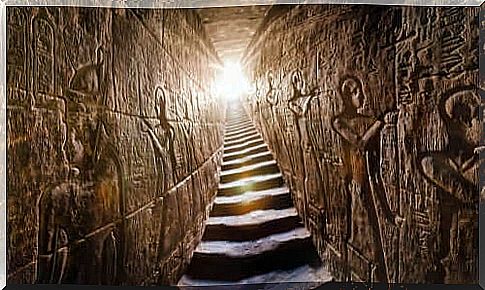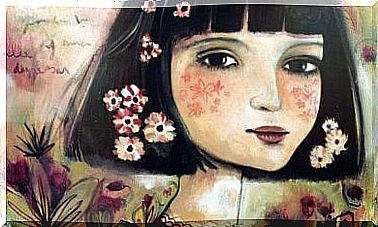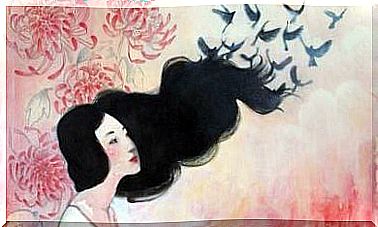Six Curious Facts About Egyptian Culture

Egyptian culture is one of the most admired and mythologized cultures in history. We’re also probably talking about the most prosperous civilization mankind has seen: the same civilization that spawned great thinkers and incredible scientific, technical and academic breakthroughs.
After Mesopotamia, Egypt was even the second place where the written language developed: the famous hieroglyphs. The word hieroglyph comes from the Greek ‘hiero’ , meaning ‘holy’, and ‘glifo’ , meaning ‘writing’. Curiously, Egyptian hieroglyphs have a structure never seen before in the Mesopotamian regions of Sumer and Akkad.
Although it has been centuries since the use and interpretation of these images, more and more people are becoming interested in them. This is due to the revival of Egyptian culture, largely due to globalization and the rise of social networks.

Six Curious Facts About Egyptian Culture
1. Free men built the pyramids
Despite what everyone thinks, it was not slaves who built the pyramids of Egypt. The men who worked on the pyramids did so on three-month contracts, received a reasonable salary and were highly respected, even if they came from humble origins.
The admiration for these men was such that if they died on the job, they were buried in the pyramid complex at Giza. That way they were even closer to the pyramids than the pharaohs, which was a great honor. The slaves at that time mostly devoted their time to household chores.
2, Ancient Egypt revered cats
That Egyptians worship cats is no secret, but many cannot understand the extreme reverence of cats that they expressed. According to Egyptian culture , felines were the embodiment of Ra, the deity of the sun. This one had come to earth to kill the God of chaos, Apophis – a serpent.
Ra’s figure subsequently became a subordinate of Bastet, a female deity, protector of families and goddess of battle. She turned cats into sacred and untouchable creatures, who later became pets.
3. Mortar was invented by Egyptian culture
Egyptians created this material, which they used to build construction elements. They used it to shape the foundations of the pyramids. However, it is currently being debated whether Etruscans also contributed to this creation.
The pyramid of Cheops was the first to use mortar, around 2600 BC. From this time and as a result, Egyptians developed various types of plaster, including the plaster casts, finishing cement, and decorative lime.
4. An egalitarian society, more than the Greeks or Romans
In Ancient Egypt, women had more rights than their Greek and Roman contemporaries. The Egyptian culture even allowed divorce and inheritance (as with the Celts) and abuse was frowned upon.
In addition, women could have their own businesses and have different types of occupations. However, most of these occupations were related to health and motherhood.

5. Left foot forward
If you look at a statue from Ancient Egypt, you will see that the left foot is always forward. This is because the Egyptian culture believed that the left side of the body was the side that gave life, because the heart is on that side.
During attacks on temples, the enemies even destroyed the left legs of the statues. That is how they symbolically destroyed the “life” of the pharaoh. This meant that the pharaoh was then destined to be forgotten forever.
6. The color of mourning in Egyptian culture was red
Ironically, the lucky color during this time was black. This was because of the color of the riverbank of the Nile, which turned black due to the abundance of loam. This was associated with a good harvest season.
However, red was the color inside the coffins. It represented the fury of life, the fury of battle and, in a less symbolic way, the blood of the animal sacrifices that only upper-class families could afford for their funerals.
Egyptian culture has been instrumental in developing many cultural (and also less cultural) elements that are part of Western culture today. Their medical and scientific innovations remain at the forefront of every other civilization.
The amazing architecture of this culture is one of the most incredible examples of megalomania that ever existed.









